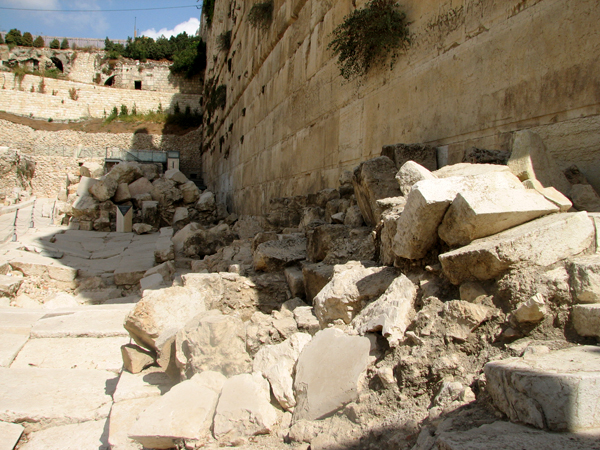
The name given to the outbreak of civilian violence against the Roman establishment in Judea in 66 AD. It was put down and, except for some mopping up actions, ended essentially when the temple in Jerusalem was razed and destroyed on 28 Aug 70 AD.

By the middle of the 1st Cent AD Judea was no longer a Jewish nation. As a result of Roman rule, large populations of foreigners lived in major cities like Caesarea and Samaria, though cities like Joppa and Jerusalem managed to maintain a strong Jewish presence. The Jews never found it easy to live alongside these foreigners who were often ignorant of and insensitive especially to their religious peculiarities. The procurators Rome sent to govern Judea also did not help. Usually not the cream of the lot, they often saw their appointments as opportunities for personal gain; many of them were openly corrupt. This was particularly the case with Nero's appointee Gessius Florus who took office in 64 AD. Florus was an insatiably greedy man for whom no bribe was too small to refuse and no gift too large to turn down. With money to be made, complaints by the Jews about such inter-ethnic/religious slights went unattended. In the end things came to a head and civilian unrest broke out that quickly escalated into full revolt in 66 AD.
General Vespasian was commanded to put down the revolt. When Nero committed suicide in 68, and Vespasian was acclaimed emperor by his troops, command passed to his son Titus. Things came to a dramatic end when the Roman soldiers breached the walls of the temple in which the rebels had holed up and the place set on fire (there is some debate about whether there was an actual decision to set the temple on fire) and burnt to the ground. The Romans did as much damage as they could and huge sections of the temple walls were hewned over; the small section of the retaining wall left became the famous 'Wailing Wall'—so-called because Jews would come there to pray and mourn their loss—or, as it is called today, the Western Wall.

The fury of the Temple's destruction can be seen in the smashed up street caused by the stones cast down from above.
The last stand by the rebels came at Masada, the Herodian stronghold on the shores of the Dead Sea that they had commandeered. After several months of siege, the Romans breached the walls only to find that the rebels—930 of them—had elected to commit suicide the night before, rather than face the shame of surrender. Only two women and five children survived to tell the tale.
Probably the most famous Jew to emerge from this ordeal is Josephus. A leader in the revolt in its early days, he surrendered to the Romans and soon became their spokesman. He has left us the most comprehensive account of the revolt, though he is not always reliable.

BIBLIOGRAPHY:
Josephus, The Jewish War. One of the best translation is the one by G. A. Williamson, ed. by Mary Smallword, and published by Penguin. Most Christian pastors have a copy of Josephus's Complete Work translated by William Whiston, but are usually left unread. The reason is not difficult to find; Whiston seems to think it necessary to use six words when two will do. Whiston's is now in the public domain; Click here to download a pdf from the Christian Classic Ethereal Library.
A. Berlin & J. Overman, eds., The First Jewish Revolt. Archaeology, History, and Ideology. London: Routledge, 2002.
N. Faulkner, Apocalypse. The Great Jewish Revolt against Rome AD 66-73. Stround: Amberley, 2012.
Martin Goodman, The Ruling Class of Judaea. The Origins of the Jewish Revolt against Rome AD 66-70. Cambridge: Cambridge University Press, 1987.
Martin Goodman, Rome and Jerusalem: The Clash of Ancient Civilizations. New York: Vintage Books, 2007.
S. I. Sheppard, The Jewish Revolt AD 66-74. Oxford: Osprey, 2013. Particularly strong on the the military aspects of the revolt. Well illustrated.

©ALBERITH
u151121lch